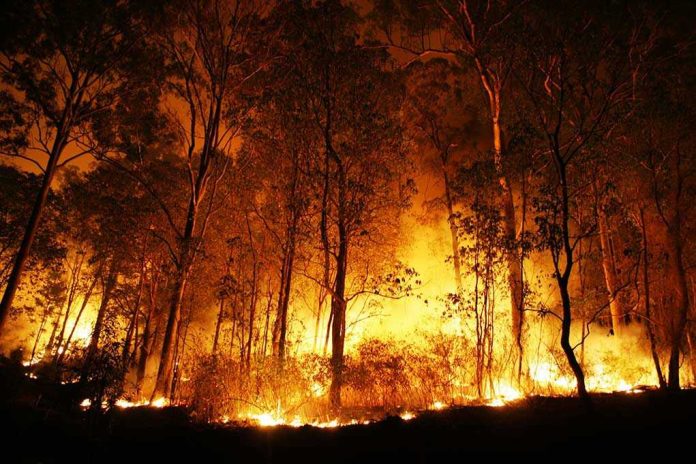
A toxic blaze at the Port of Los Angeles smoldered for hours before residents were alerted to the potential dangers.
Story Highlights
- Fire at the Port of L.A. involved hazardous materials.
- Emergency alerts delayed for nearly six hours.
- Residents advised to shelter in place due to toxic smoke.
- Concerns raised over emergency response protocols.
Delayed Emergency Response
The Los Angeles Fire Department faced scrutiny for its delayed response in warning residents during a hazardous materials fire at the Port of L.A. The fire began in the early hours of Friday, shrouding the area in potentially toxic smoke. However, it wasn’t until six hours later that officials issued an emergency alert advising residents to stay indoors and seal their homes as a precaution against the dangerous fumes.
The delay in communication has sparked concerns among residents and experts alike, questioning the protocols in place for such emergencies. Many are left wondering how a fire of this magnitude could burn for hours without immediate public notification. The situation highlights the importance of timely alerts in safeguarding public health, especially in urban areas where industrial activities pose inherent risks.
Understanding the Hazards
Fires involving hazardous materials, such as the one at the Port of L.A., present significant challenges for emergency responders. The complex nature of these materials requires specialized knowledge and equipment to manage the situation effectively. In this case, the fire produced smoke that potentially contained harmful chemicals, which could pose serious health risks to those exposed.
Authorities typically rely on air quality monitors and other technologies to assess the threat level of such fires. However, delays in analyzing data and disseminating information can lead to gaps in public safety measures. The incident at the port underscores the need for efficient systems that ensure rapid response and communication to protect communities.
Lessons for Future Incidents
The incident at the Port of Los Angeles serves as a critical learning opportunity for emergency management agencies. It highlights the necessity of reviewing and enhancing existing protocols to prevent similar delays in the future. Ensuring that emergency alerts are issued promptly can significantly mitigate the impact of hazardous events on surrounding populations.
Collaboration between local authorities, emergency services, and community organizations is essential in fostering a resilient response framework. By engaging in proactive planning and regular drills, these entities can better prepare for potential emergencies and ensure swift action when needed. The goal is to protect public health and safety by minimizing exposure to hazardous conditions.
Community Impact and Reactions
Residents in the affected area expressed frustration and concern over the delayed response to the fire. Social media platforms were abuzz with discussions about the incident, with many questioning why it took so long for officials to issue warnings. The community’s reaction highlights the importance of trust and transparency in emergency management practices.
Forging strong communication channels between authorities and the public is crucial in maintaining confidence during times of crisis. By actively engaging with residents and addressing their concerns, agencies can build a foundation of trust that enhances the overall effectiveness of emergency response efforts.







